Track Categories
The track category is the heading under which your abstract will be reviewed and later published in the conference printed matters if accepted. During the submission process, you will be asked to select one track category for your abstract.
Genetics study of heredity and varieties. Genomics and varieties are controlled by qualities—what they are, their specialty, and how they work. Genes inside the core of a cell are hung together so that the arrangement conveys data: that data decides how living beings acquire different highlights (phenotypic attributes). For instance, posterity created by sexual multiplication normally appear to be like every one of their folks since they have acquired a portion of every one of their folks' qualities. Genetics distinguishes which highlights are acquired, and clarifies how these highlights go from age to age. The Genetic code not just controls heritage: It likewise controls quality articulation, which happens when a segment of the twofold helix is uncoiled, uncovering a progression of the nucleotides, which are inside of the DNA to turn ON the Gene. Closing the uncoiled segment turns off the gene.

- Track 1-1Nanotechnology in Genetics
- Track 1-2Genes and Chromosomes
- Track 1-3Genetic Linkage and Chromosome Mapping
- Track 1-4Regulation of Gene Activity
- Track 1-5Quantitative Genetics and Multifactorial Inheritance
- Track 1-6Genetic Engineering and Genome Analysis
- Track 1-7Principles of Genetic Transmission
- Track 1-8CRISPR-cas 9 Technology
Genetic disorders are a hereditary problem, meaning that they are passed down from the parent’s genes or caused by one or more abnormalities in the genome. In such cases, the defect will only be passed down if it occurs in the germline and most genetic disorders are quite rare and affect one person in every several thousands or millions. Genetic disorders may likewise be complex, multifactorial, or polygenic, which means they are likely connected with the impacts of numerous genes lifestyles and environmental factors. Multifactorial disorders incorporate coronary illness and diabetes. Although complex issue frequently group in families, they don't have an obvious example of legacy. This makes it hard to decide a man's danger of acquiring or passing on these disarranges. Complex issue are likewise hard to study and treat, on the grounds that the particular factors that reason the vast majority of these clutters have not yet been recognized.
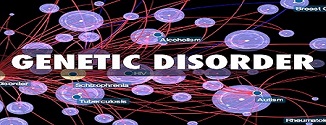
- Track 2-1Maternal transmission, heteroplasty
- Track 2-2Complex Parent of origin effects due to genomic imprinting
- Track 2-3Autosomal recessive characterized by variable expressivity, and genetic heterogeneity
- Track 2-4Turner Syndrome
- Track 2-5Polycystic Kidney Disease
- Track 2-6Osteogenesis Imperfect
- Track 2-7Neuromuscular Disorders
- Track 2-8Autosomal dominant disorders
- Track 2-9Autosomal Recessive disorders
- Track 2-10Huntington Disease
- Track 2-11Holoproencephaly
- Track 2-12Hemochromatosis
Animal genetics is a branch of genetics that studies heredity and variation chiefly in farm animals but also in domestic and wild animals. It is based on general genetic principles and concepts, and it mainly uses the hybrid, cytological, population, ontogenetic,mathematical-statistical, and twin methods of general genetics.
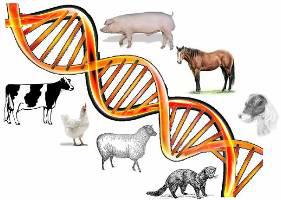
Cancer Genetics is an inherited issue in which the normal control of cell change is lost. Malignant inherited characteristics are by and by one of the speediest stretching out restorative qualities. The influenced qualities are partitioned into two general classifications. Oncogenes are qualities that advance cell development and propagation. Tumor suppressor genes are genes that restrain cell division and survival. Harmful change can happen through the arrangement of novel oncogenes, the unseemly finished articulation of ordinary oncogenes, or by the under-articulation or crippling of tumor silencer genes. Regularly, changes in various genes are required to change an ordinary cell into a tumor cell. Hereditary changes can happen at various levels and by various components.
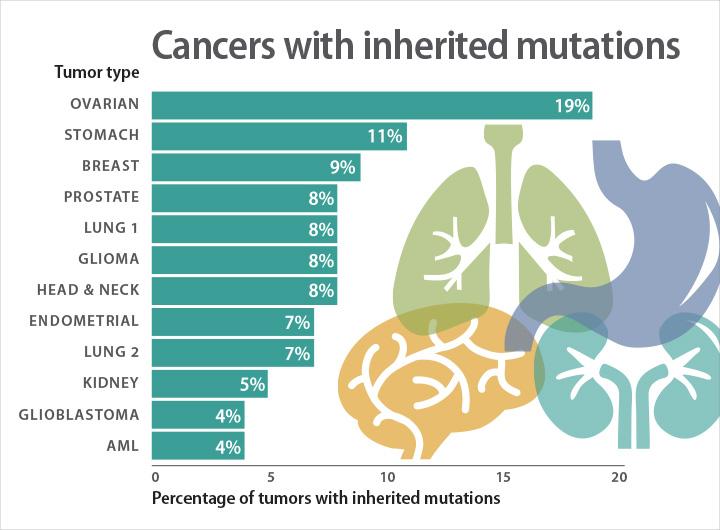
- Track 4-1The Genetic Basis of Cancer
- Track 4-2Oncogenes
- Track 4-3Cancer Genetics in the Clinic
- Track 4-4Genetic Alternations in Common Cancers
- Track 4-5Cancer Genomes
- Track 4-6Genetics of common cancers
- Track 4-7Pediatric Cancer
Human Genetics is the study of inheritance as it happens in people. Human Genetics incorporates an assortment of covering fields including: classical genetics, cytogenetics, molecular genetics, biochemical genetics, genomics, population genetics, developmental genetics, clinical genetics, and genetic counselling. Genes can be the normal factor of the characteristics of most human-acquired attributes. Investigation of human genetics can be helpful as it can answer questions regarding human behaviour, comprehend the sicknesses and advancement of successful malady treatment, and comprehend genetics of human life.
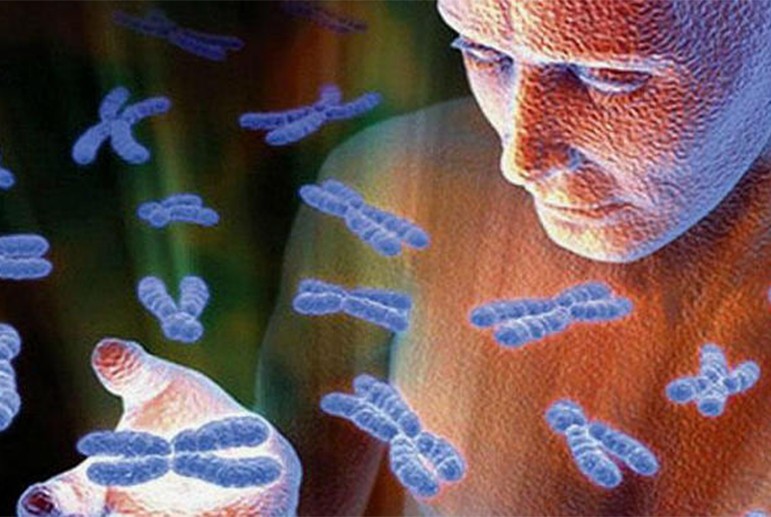
- Track 5-1Human Genome Sequence and Variation
- Track 5-2From Genes to Genomics to Proteomics
- Track 5-3Oligogenic Disease
- Track 5-4Formal Genetics of Humans: Multifactorial Inheritance and Common Diseases
- Track 5-5Human Genetics of Infectious Diseases
- Track 5-6Gene Action: Developmental Genetics
- Track 5-7Consanguinity, Genetic Drift, and Genetic Diseases in Populations with Reduced Numbers of Founders
- Track 5-8Cloning in Research and Treatment of Human Genetic Disease
- Track 5-9Genetic disorders in Embryology
Molecular Pharming utilizes plants to create substantial amounts of pharmaceutical substances like antibodies and vaccines. It is as same as the technique for creating Genetically Modified Crops, the artificial introduction of genes into plants. Plant Genetics is the study of genes, hereditary variety, and genetics particularly in Plants. It is for the most part thought about a field of biology and botany, however crosses much of the time with numerous other life sciences and is firmly connected with the investigation of data frameworks. In agriculture, a plant's qualities impact the improvement of the plant, as they are parts of its chromosomes and are acquired through sexual propagation. There are two different ways by which qualities can be changed: the gene gun method strategy and the agrobacterium technique. The gene gun method technique is particularly helpful in changing monocot species like corn and rice and is otherwise called biolistic. The agrobacterium strategy has been effectively drilled in dicots, i.e. broadleaf plants, for example, soybeans and tomatoes, for a long time. It is likewise viable in monocots like grasses, including corn and rice. This technique is likewise favoured over the gene gun method strategy as it is less demanding to screen because of a more prominent recurrence of single-site inclusions of outside DNA.
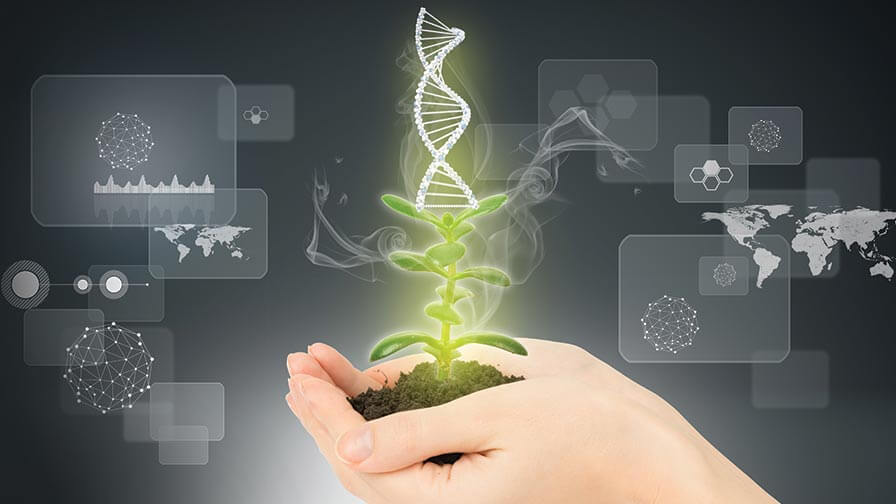
- Track 6-1Germplasm for breeding
- Track 6-2Molecular breeding
- Track 6-3Molecular genetic modifications and genome-wide genetics
- Track 6-4Marketing and societal issues in breeding
- Track 6-5Plant cellular organization and genetic structure
- Track 6-6Clonal propagation and in vitro culture
- Track 6-7Plant genetic resources
- Track 6-8Pathogenic diseases and variation in plants
Molecular Genetics is the field of science that reviews the structure and capacity of qualities at a molecular level and along these lines utilizes strategies for both molecular biology and genetics. The study of chromosomes and gene expression of an organism can give knowledge into heredity, genetic variation and transformations. The examination of Genetics at the level of the basic building squares of cells and at the DNA level. Cells are as mind boggling as they are little and much is as yet obscure about the internal workings of these building pieces of life. In the event that you'd get a kick out of the opportunity to log hours in a lab and use utilize propelled equipments to help propel the comprehension of how cells function, thinks about in cell and nuclear science could be for you.

- Track 7-1Role of Histones and their Acetylation in Control of Gene Expression
- Track 7-2Transgenic Regulation in Laboratory Animals
- Track 7-3The Polymerase Chain Reaction
- Track 7-4Non-random mating
- Track 7-5Natural selection
- Track 7-6DNA Replication and its Control
- Track 7-7Molecular Cloning
Medicinal Genetics is the branch of medication that includes the analysis and management of genetic issue. Medicinal Genetics varies from human genetics in that human genetics is a field of scientific research that might apply to drug, while medicinal Genetics research to the application of genetics to medical care. For instance, look into on the causes and inheritance of genetic disorders would be considered within both human genetics and medicinal genetics, while the diagnosis, management, and counselling people with hereditary disarranges would be considered part of medicinal genetics. Genetic Medicine is a newer term for medicinal genetics and incorporates areas such as gene therapy, personalized medicine, and the rapidly emerging new medical specialty, predictive medicine.
Medicinal genetics incorporate a wide range of genetic counsellors, and nutritionists, clinical diagnostic laboratory activities, and research into the causes and inheritance of genetic disorders. Examples of conditions that fall inside the extent of therapeutic hereditary qualities incorporate birth surrenders and dysmorphology, mental hindrance, extreme introvertedness, mitochondrial clutters, skeletal dysplasia, connective tissue issue, disease hereditary qualities, teratogens, and pre-birth finding. Medicinal genetics is progressively getting to be important to numerous normal infections. Overlaps with other therapeutic claims to fame are starting to rise, as on-going advances in genetics are revealing etiologies for neurologic, endocrine, cardiovascular, aspiratory, ophthalmologic, renal, mental, and dermatologic conditions.
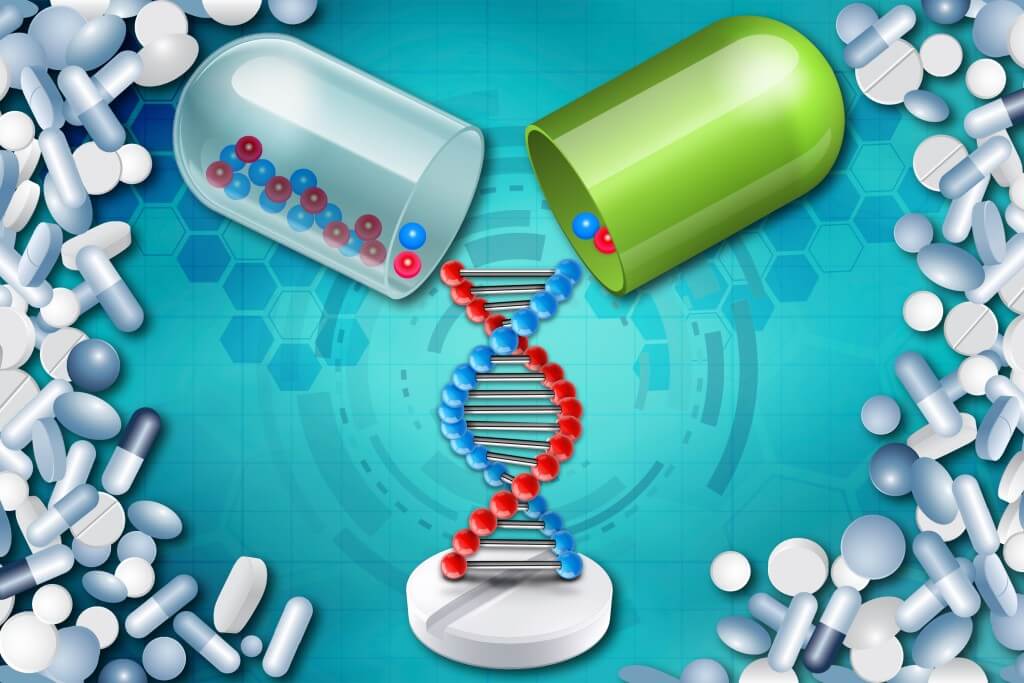
- Track 8-1Chromosome disorders
- Track 8-2MathematicaI and population genetics
- Track 8-3Patterns of in heritance
- Track 8-4Drug Metabolism
- Track 8-5Genetic Variations revealed solely by effects of drugs
- Track 8-6Pharmacogenetics
- Track 8-7Genetic factors in common diseases
Population genetics is the study of genetic variation within population, and involves the examination and modelling of changes in the frequencies of genes and alleles in population over space and time. A significant number of the genes found within a population will be polymorphic - that is, they will occur in different structures (or alleles). Numerical models are utilized to examine and predict the occurrence of specific alleles or combination of alleles in population, in view of advancements in the molecular understanding of genetics, Mendel's laws of inheritance and modern evolutionary theory. The focus is the populace or the species not the person. Evolutionary Genetics are the investigation of how hereditary variety prompts transformative change. It incorporates subjects, for example, evolution of genome structure, the genetic basis of speciation and adaptation, and genetic change in response to selection within populations.
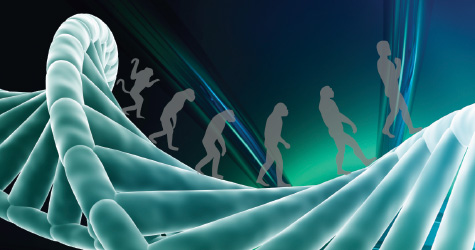
- Track 9-1Hardy-Weinberg equilibrium
- Track 9-2Microevolution
- Track 9-3New developments
- Track 9-4Genetic drift, bottlenecks & founder effects
- Track 9-5Mutation
- Track 9-6Genetic diversity
Cytogenetics is a branch of genetics that is concerned with how the chromosomes relate to cell behaviour, particularly to their behaviour during mitosis and meiosis. Techniques used include karyotyping, analysis of G-banded chromosomes, other cytogenetic banding techniques, as well as molecular cytogenetic such as fluorescent in situ hybridization (FISH) and comparative genomic hybridization (CGH).Their conduct in creature (lizard) cells was depicted by Walther Flemingdization (CGH). Chromosomes were first seen in plant cells by Karl Wil, the pioneer of mitosis, in 1882. The name was begat by another German anatomist, von Waldeyer in 1888.
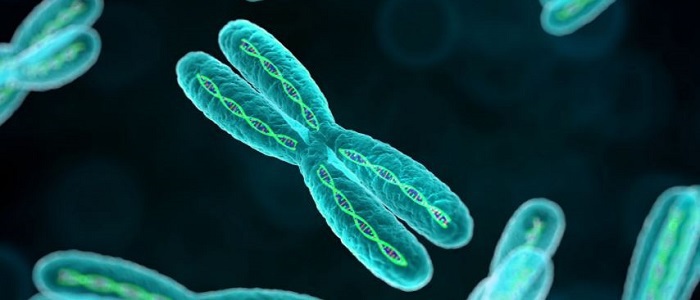
- Track 10-1Chromosome banding techniques and staining
- Track 10-2International System for human Cytogenetic Nomenclature (ISCN)
- Track 10-3Chromosome abnormalities
- Track 10-4Tumor Cytogenetics
- Track 10-5Cancer Cytogenetics
- Track 10-6Expression profiling, gene targeting, tissue-specific and inducible gene ablation
The Genomic Integrity is additionally called as hereditary alteration. It is the immediate control of living beings of the genome by utilizing biotechnology. Genes might be evacuated, or "thumped out", utilizing a nuclease. Gene is focusing on an alternate method that utilizations homologous recombination to change an endogenous quality, and this can be utilized to delete gene, expel exons, addition of gene, or to present hereditary transformations. It is an arrangement of advances used to change the hereditary cosmetics of the cell and including the exchange of qualities crosswise over species limits to create enhanced novel life forms. Genes designing does not regularly incorporate customary creature and plant rearing, in vitro treatment, acceptance of polyploidy, mutagenesis and cell combination systems that don't utilize recombinant nucleic acids or a hereditarily altered life form all the while. The maintenance of genome integrity is essential for organism survival and for the inheritance of traits to offspring. Genomic instability is caused by DNA damage, aberrant DNA replication or uncoordinated cell division, which can lead to chromosomal aberrations and gene mutations.
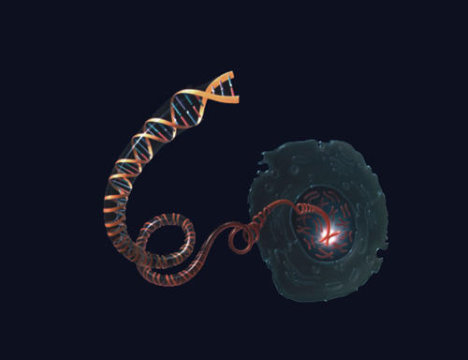
- Track 11-1Gene Organisation
- Track 11-2Isolation of DNA & RNA
- Track 11-3Nucleic acid hybridisation
- Track 11-4Gene Cloning
- Track 11-5Selection, screening, and analysis of recombinants
Bioinformatics in Genetics is the utilization of programming building, bits of knowledge, and number juggling to issues in science. Bioinformatics in Genetics crosses a broad assortment of fields inside science, including genomics/innate characteristics, biophysics, cell science, natural science, and improvement. In like way, it makes use of instruments and techniques from an extensive variety of quantitative fields, including figuring design, machine learning, Bayesian and visit estimations, and real material science.
A great deal of computational science is stressed over the examination of sub-nuclear data, for instance, bio groupings (DNA, RNA, or protein courses of action), three-dimensional protein structures, quality enunciation data, or sub-nuclear natural frameworks (metabolic pathways, protein-protein joint effort frameworks, or quality managerial frameworks). A wide combination of issues can be had a tendency to using this data, for instance, the distinctive evidence of affliction causing characteristics, the diversion of the Transformative narratives of species, and the opening of the complex regulatory codes that turn characteristics on and off. Bioinformatics in Genetics can in like manner be stressed over non-sub-nuclear data, for instance, clinical or natural data.

- Track 12-1Computational biomodeling
- Track 12-2Computational neuroscience
- Track 12-3Computational pharmacology
- Track 12-4Computational evolutionary biology
- Track 12-5Computational Entomology
- Track 12-6Next generation sequencing
Neurogenetics is the part of genetics in the advancement and function of the nervous system. It consider about neural attributes as phenotypes (i.e. appearances, measurable or not, of the genetic make-up of an individual), is primarily in view of the perception that the nervous systems of people, even of those having a place with similar animal types, may not be identical. As the name infers, it draws perspectives from both the studies of neuroscience and hereditary qualities, focusing specifically how the hereditary code a life form conveys influences its communicated attributes. Transformations in this hereditary succession can have an extensive variety of impacts on the personal satisfaction of the person. Neurological sicknesses, conduct and identity are altogether examined with regards to neurogenetics. The field of neurogenetics developed in the mid to late 1900s with progresses firmly following headways made in accessible technology. Currently, neurogenetics is the focal point of much research using cutting edge techniques. The field of neurogenetics emerged from advances made in molecular biology, genetics and a desire to understand the link between genes, behaviour, the brain, and neurological disorders and diseases.

- Track 13-1Behavioral neurogenetics
- Track 13-2Cross-species gene conservation
- Track 13-3Neural development
- Track 13-4Cognitive genomics
- Track 13-5Computational Neurogenetic Modeling
Periodontitis is a multifactorial disease that causes tooth loss. The intricate pathogenesis of periodontitis infers the involvement of a susceptible host and a bacterial challenge. Numerous studies provided a valuable contribution to understanding the genetic basis of periodontal disease, but the specific candidate genes of susceptibility are still unknown. Truly, huge examinations and screening of single-nucleotide polymorphisms have yielded new innate information without a total response for the organization of periodontal disorder. In this unique duplicate, we give a survey of the most relevant written work, showing the standard thoughts and bits of learning of the philosophies that have been creating to all the more likely break down and treat periodontal infection in view of biomarker examination and host regulation.
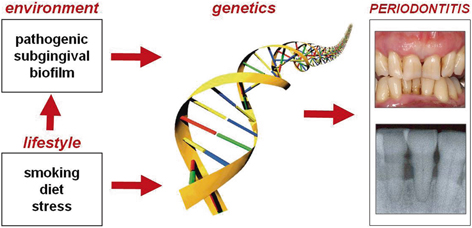
- Track 14-1Gene Polymorphisms in Chronic Periodontitis
- Track 14-2Genetics and Susceptibility to Periodontists
- Track 14-3Effect of gene polymorphisms on periodontal diseases
- Track 14-4Epigenetics in periodontics
- Track 14-5Periodontitis is a multifactorial disease
- Track 14-6Inherited periodontitis
Epigenetics is the study of heritable phenotype changes that do not involve alterations in the DNA sequence. Epigenetics implies features that are "on top of" or "in addition to" the traditional genetic basis for inheritance. Epigenetics most often denotes changes that affect gene activity and expression, but can also be used to describe any heritable phenotypic change. Such effects on cellular and physiological phenotypic traits may result from external or environmental factors, or be part of normal developmental program. The standard definition of epigenetics requires these alterations to be heritable either in the progeny of cells or of organisms. Epigenetic research uses a wide range of molecular biological techniques to further understanding of epigenetic phenomena, including chromatin immunoprecipitation (together with its large-scale variants ChIP-on-chip and ChIP-Seq), fluorescent in situ hybridization, methylation-sensitive restriction enzymes, DNA adenine methyltransferase identification (DamID) and bisulfite sequencing. Furthermore, the use of bioinformatics methods has a role in (computational epigenetics).

- Track 15-1Histone modification
- Track 15-2DNA methylation
- Track 15-3X-inactivation
- Track 15-4Clinical Epigenetics
- Track 15-5Translational epigenetics
- Track 15-6Reproductive epigenetics
- Track 15-7Environmental Epigenetics
Immunogenetics has a critical part in the examination of single characteristics of genes and their part in the manner in which traits or conditions are passed beginning with one time then onto the following. The examination of the atomic and cell parts that include the protected structure, including their ability and association turns into the central craft of immunology. Immune system infections, for example, type 1 diabetes, are complex genetic characteristics which result from defects in the immune system Distinguishing proof of qualities characterizing the insusceptible deformities may recognize new target qualities for remedial methodologies. Then again; genetic assortments can in like manner describe the immunological pathway provoking illness.

- Track 16-1Granulocyte Immunology
- Track 16-2Genes and Immunity
- Track 16-3Immunogenetics and Pharmacogenetics
- Track 16-4Vasculitis and Autoimmune Disease
- Track 16-5Platelet Immunology
- Track 16-6Genetics of Allo Antigens
- Track 16-7Genetic control of immune cell activation
- Track 16-8Chronic Inflammation
- Track 16-9Immunogenicity
Genetic Counselling is the procedure by which the patients or relatives at risk of an acquired disorder (or might convey a kid at risk) are advised with the outcomes and nature of the disorder, the likelihood of creating or transmitting it, and the choices open to them in management and family planning. This mind boggling procedure can be isolated into indicative (the real estimation of hazard) and supportive aspects.
Gene Therapy is a preliminary strategy that uses characteristics or basically nucleic destructive polymers to treat or hinder ailment into a patient's cell as a pharmaceutical for disease treatment. Later on, this strategy may empower authorities to treat disarray by implanting's a gene into a patient's cells rather than using solutions or medical procedure. Gene Therapy is a way to deal with settle an innate issue at its inside or source. The polymers are either changed over into proteins which meddle with the target quality articulation or else they could amend inherited changes.
The most surely understood sort of value transport is as DNA that encodes the common sense helpful quality to supplant the target changed quality. The polymer particles are packaged inside a vector which passes on the iotas inside and helps in their compromise. Gene Therapy is an exceptionally viable however simple to disprove sort of treatment of inherited issue dependent upon their level of sensibility and social and good affirmation.
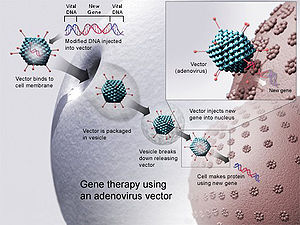
- Track 17-1Gene Polymorphism
- Track 17-2Regenerative Medicine
- Track 17-3Gene Editing and CRISPR Based Technologies
- Track 17-4Viral Gene Therapy
- Track 17-5Ethical Issues Related To Gene Therapy
- Track 17-6Advanced Therapy Production
Optogenetics and chemo genetics are the recent and well known strategies used to study this relationship. Both of these strategies target particular mind circuits and cell populace to impact cell movement. Be that as it may, they utilize distinctive strategies to achieve this undertaking. Optogenetics utilizes light-delicate channels and pumps that are virally introduced into neurons. Cells' movement, having these channels, would then be able to be controlled by light. Chemo genetics, then again, utilizes synthetically designed receptors and exogenous atoms particular for those receptors, to influence the movement of those cells.
DREADDs are the most widely recognized GPCRs utilized in chemo genetics. These receptors exclusively get initiated by the medication of intrigue (inert molecule) and impact physiological and neural procedures that occur inside and outside of the central nervous system.
Chemo genetics has been favoured over Optogenetics, and it maintains a strategic distance from a portion of the difficulties of Optogenetics. Chemo genetics does not require the costly light equipment, and in this way, is more available. The goals in Optogenetic decreases because of light scrambling and illuminance declined levels as the separation between the subject and the light source increases. These factors, in this manner, don't take into consideration all cells to be influenced by light and prompt lower spatial goals. Chemo genetics, be that as it may, does not require light utilization and accordingly can accomplish higher spatial goals.
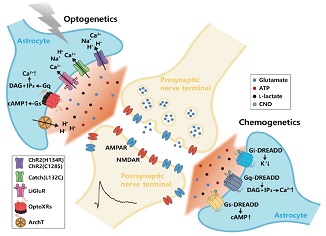
- Track 18-1Mapping of the brain and behaviour
- Track 18-2Cell culture, Network analysis
- Track 18-3Improvement of appropriate light sources
- Track 18-4Transfection methods
- Track 18-5Parkinson disease, Epilepsy
- Track 18-6Forward cheamogenomics
- Track 18-7Reverse chaemogenomics
- Track 18-8Personalized medicine
- Track 18-9Phenotypic screening
Immature microorganisms are undifferentiated regular cells that experience mitosis to convey more cells, which are found in multicellular living things. They are of two sorts, embryonic and grown up microorganisms. The undeveloped cell treatment was seen to be a lifesaving treatment for the patients with solid tumours and blood issue. Essential microorganisms can be obtained from the umbilical string after new-born’s first experience with the world. Maybe they can moreover be gotten from periphery blood and bone marrow. As demonstrated by the reports, in US the availability of undifferentiated cell treatment was $15.2 million of each 2007 and $16.5 million of each 2008 and it is surveyed to reach $11 billion by 2020.
Undifferentiated creature treatment is the strategy for using undeveloped cells for with respect to and furthermore keeping any disease or strife. Bone marrow transplantation is the most by and large used youthful microorganism treatment, anyway some undeveloped cell treatment using umbilical string bloods are similarly for all intents and purposes.

- Track 19-1Somatic Cell Reprogramming
- Track 19-2Tissue Regeneration
- Track 19-3Vascular Regeneration
- Track 19-4Articular Cartilage Tissue 211 Engineering
- Track 19-5Oral Bone Reconstruction
Microbial Genetics is a subject area inside microbiology and genetic engineering. It examines the genetics of small (micro) life forms; microscopic organisms, archaea, infections and some protozoa and parasites. This includes the investigation of the genotype of microbial species and furthermore the articulation framework as phenotypes.
For instance: Microorganisms' quick development rates and short age times are utilized by researchers to think about advancement. Microbial hereditary qualities additionally has applications in having the capacity to examine forms and pathways that are like those found in people, for example, drug metabolism. Microorganisms are in a perfect world suited for biochemical and hereditary qualities examines and have made huge contributions to these fields of science, for example, demonstration that DNA is the hereditary material. Utilizing organisms, conventions were created to embed qualities into bacterial plasmids, exploiting their quick generation, to make bio factories for the gene of interest. Such hereditarily built microorganisms can deliver pharmaceuticals, for example, insulin, human development hormone; interferon’s and blood clotting factors.

- Track 20-1Gene fusions
- Track 20-2Eukaryotic Genomes
- Track 20-3Prokaryotic Genomes
- Track 20-4Genetic Recombination
- Track 20-5Transposons and Transposition
- Track 20-6Mechanisms of Gene Transfer
Structural genomics seeks to depict the 3-dimensional structure of each protein encoded by a given genome. This genome-based approach takes into consideration a high-throughput technique for structure assurance by a combination of experimental and modelling approaches. The important contrast between structural genomics and traditional structure prediction is that structural genomics endeavors to decide the structure of each protein encoded by the genome, instead of concentrating on one specific protein. With full-genome arrangements accessible, structure prediction should be possible all the more rapidly through a combination of experimental and modelling approaches, particularly in light of the fact that the accessibility of expansive number of sequenced genomes and beforehand explained protein structures enables researchers to display protein structure on the structures of previously solved homologs.
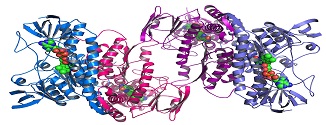
- Track 21-1Modelling Threading
- Track 21-2Structure databases
- Track 21-3Proteomics
- Track 21-4Traditional structural prediction
- Track 21-5Structural homology
- Track 21-6Structural bioinformatics
Forensic genetics: The branch of genetics that deals with the application of genetic knowledge to legal problems and legal proceedings. Forensic genetics is also a branch of forensic medicine which deals more broadly with the application of medical knowledge to legal matters.
Forensic genetics today tends to conjure up DNA. However, even the term "DNA fingerprinting" is reminiscent of older methods of police identification. Forensic genetics is not a new field. Long before the era of DNA fingerprinting, blood grouping, HLA typing and other tests of genetic markers in blood were done to try to determine who did it (and, more often, who did not do it).
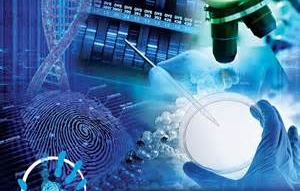
- Track 22-1DNA Fingerprinting
- Track 22-2Evaluation and presentation of DNA evidence
- Track 22-3Kinship testing
- Track 22-4Lineage markers
- Track 22-5Single nucleotide polymorphisms
- Track 22-6Statistical interpretation of STR profiles
- Track 22-7PCR amplification
- Track 22-8Anthropological studies
Nutrigenetics intends to recognize how genetic variation affects response to nutrients. This data can be applied to improve health and prevent or treat diseases. The ultimate aim of nutrigenetics is to offer individuals customized nourishment in light based on their genetic makeup.
A major goal for nutrigenetic scientists is to identify genes that make certain people more susceptible to obesity and obesity related diseases. The thrifty gene hypothesis is a example of a nutrigenetic factor in obesity. Future progressions in nutrigenetics research may conceivably demonstrate the presence of thrifty genes and in addition discover counter-impacts keeping in mind the end goal to prevent obesity and obesity-related diseases.
Main goal in nutrigenetics is to allow nutritionists and doctors to individualize health and diet suggestions. Therefore, preventive medicine, diagnostics and therapies could be optimized.

- Track 23-1Nutrition Market
- Track 23-2Clinical Trials
- Track 23-3Obesity
- Track 23-4Genetic variations affecting the nutritional environment
- Track 23-5Dietary bioactives with genome
The Global Genetic testing market is anticipated to grow at a CAGR of 13.56% between 2018 and 2026. Genetic testing includes observing the DNA, a chemical databank that transports directives for the body’s utilities. Genetic testing can reveal changes or alterations in the genes that may cause illness or disease. The Genetic testing market is primarily driven by the following factors:
Rise in incidence of genetic diseases
Advances in genetic testing for cancer
Geographically, the global genetic testing’s market has been segmented on the basis of four major regions, which include:
North America – United States & Canada
Asia-Pacific – China, India, Japan, Korea & Rest of APAC
Europe – United Kingdom, France, Germany, Italy, Spain & Rest of Europe
Rest of World- Latin America, Middle East and North Africa & Rest of Africa
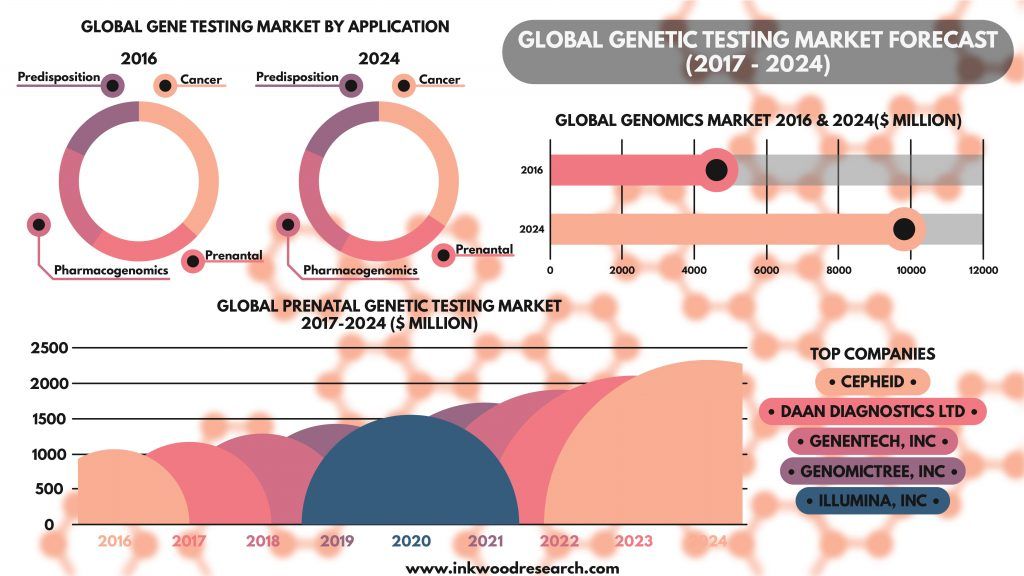
- Track 24-1Genetic Testing
- Track 24-2Digital Genome Market
- Track 24-3Global genetic disorder diagnosis market
- Track 24-4Pharmacogenetic testing
- Track 24-5Inherited disorder testing
Cancer Biomarkers are particles that indicate traditional or anomalous technique occurring in your body and should be an indication of associate underlying condition or sickness. Different sorts of particles, similar to DNA (qualities), proteins or hormones, will work as biomarkers, since every one of them show one thing in regards to your wellbeing. Biomarkers are additionally made by the malignancy tissue itself or by various cells inside the body in light of disease. They can be found inside the blood, stool, pee, tumor tissue, or distinctive tissues or natural liquids. Eminently, biomarkers are not constrained to malignant growth. There are biomarkers for heart condition, multiple sclerosis, and plenty of different diseases.
- Track 25-1Tumorigenesis and Cancer Diagnostics
- Track 25-2Precision Medicine & Clinical Diagnostics
- Track 25-3Biomarkers in Drug Discovery
- Track 25-4Exploring, identifying & validating new biomarkers
